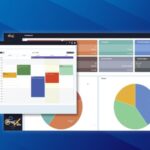How much would you pay to be able to read the mind of your customers and interpret the direction that they want to move before having to even ask them? It would seem almost priceless as we continually look forward to the next evolution of how to service our customers.
Instead of having several meetings with several departments to accomplish a complete needs analysis for each project, you could be able to reference exactly how a customer’s current systems are being utilized and present the resources that are demonstrated as being essential to their day-to-day operations. All this is possible while still taking the time to make sure they will be getting any new features, technology or alterations that would suit the updates to the system that they are looking to build.
It sounds like it might be too good to be true, but the fact is many industries have been doing this for a long time. The AV industry is just starting to recognize the possibility of interpreting customer intentions ahead of time as it begins to invest in managed services. As integrators start monitoring, supporting and controlling the systems that we deploy remotely it will soon be much more commonplace for integration firms or manufacturers to want to gather information in order to determine how they can provide more products or services that end users want to see. These analytics are precisely what will allow for this next jump in progress.
Consider a higher ed or corporate environment. These are environments with a vast array of system roll outs, a myriad of people with extraordinarily different experience and comfort levels using technology and a physical space that has the capability of spanning several city blocks, or more.
The remote monitoring capabilities involved in managed services gives those servicing these environments the ability to keep track of the functions of the room, troubleshoot if something falters, or send out a technician before an issue reaches critical status. By pairing analytics with managed services there is the potential to figure out what services are being used on a regular basis.
Related: Make the Move to Managed Services—But Don’t Rush It
Is the display being turned on for every class? Are there certain professors or managers that are using more technology than others based on who booked or who is scheduled to be in the room? Is there a part of the user interface in the control system that continuously causes users, or one specific user, to falter, slowing their ability to use the system or just generally give up and proceed without the use of the technology?
This information is invaluable because it allows for conversation about the needs of the user and the effectiveness of the system based on real use cases. End users can quickly budget when looking to add systems and duplicate room layouts because they can see what has and has not worked in previous roll-outs. Furthermore, it allows for integrators and consultants to determine whether or not the deployed user interface is too complicated and where it is causing issues.
Is a simpler interface needed? Is there a button that should be relocated or otherwise changed to make it easier for end users, or should something be removed in order to not disrupt the operation of the system? We can currently detect whether a device is in use, when it’s in use, when it’s malfunctioning, and so on. The application of analytics in our monitored systems is what allows us to know the little details that could make a big difference.
Soon we may even be able to sequence user interface changes based on who is occupying the room, alter the interface based on the average length of time that users are stuck on a page before triggering the next command, or tweak the system based on whether or not users have to dig too deep into the pages or menus to find the command that triggers the device they need.
Information like this will become the new currency as businesses evolve toward the point of convergence — not just for AV/IT, but for technology manufacturers, providers and the users themselves. We are already seeing a big move toward accounting for the user in the development of a product, because no matter how ingenious a system is, if it is too complicated for the intended user then it simply won’t thrive in the marketplace.
The perfect example is Apple’s iPhone. The iPhone is completely and entirely intuitive in its operation. There is no printed manual for the device; it just comes out of the box and people understand how to use it. We have to be able to make a user interface just as simple as the device itself, because the truth is, unless a product is actually broken it is not likely that the user will speak up. In this day and age people fear looking foolish for not understanding the technology, so integrators may not hear about troubles or confusion until it’s too late.
If integrators have access to information about technology hang-ups, hesitation or even non-use, they can, on the fly, update the interface to suit the needs of the client.
Related: How to Leverage Big Data and the Internet of Things
We must be sponges for information from our customers to help them better utilize all the services and systems that we can provide. The next logical step is to allow integrators to acquire that information to help serve clients better. This is the direction so many other industries have been going in for so long. The entertainment industries (music/movies/media) have been doing this for decades with things like Nielsen ratings, determining what people are watching and for how long, dictating the projected audience for each show, and allowing broadcasters to determine the cost of ad buys during that show.
We’ve been analyzed as a general populous for so long that we often don’t realize that it’s happening anymore. Each website visited and click therein is tracked. There’s still a bit of hesitation regarding the Internet of Things (IoT) because some may have concerns about privacy, and I’m not referring to the vulnerabilities in hacking but rather the idea that they don’t necessarily want organizations to have that much information about their daily lives.
The information age no longer just refers to the idea that information is readily at our fingertips. The term has now evolved to the point that information is the goal. With all the information that we can glean from analytics, more effective decisions can be made and the guesswork for getting something that ends up “in the ballpark” and is then modified to suit the use case will vanish from our practices.
You will continue to hear the term “Big Data” for years to come as we reach the overwhelming desire to acquire more and more information about people and their habits. Some have already said that Big Data is the future of AV. I wouldn’t go so far as to agree with that, but I see that there is information that we can use to make our industry more effective in people’s lives, particularly in creating better and more intuitive interfaces.
The definition of AV has blurred to include so many other devices like smartphones and tablets, and Big Data will make its way into that grey area. End users may not want to share this information with us because of privacy concerns, but there are incredible advantages as to what can be accomplished with practical data that tells us what is working, and what isn’t, in real time so we can use our equipment to provide a better user experience.













